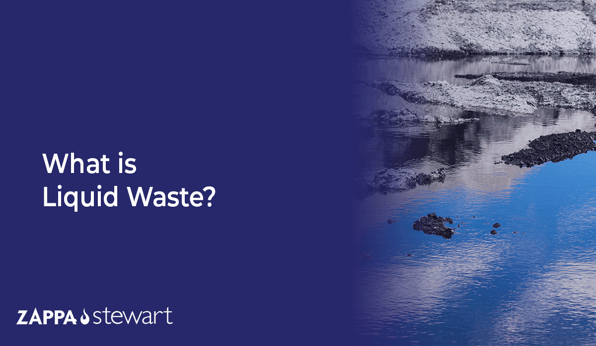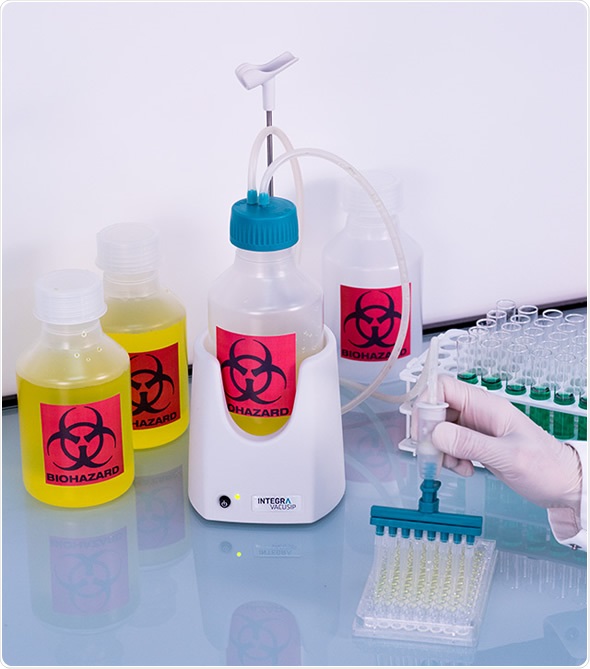Leading Industrial Wastewater Treatment Solutions: Making Certain Conformity and Effectiveness
Wiki Article
How Liquid Waste Disposal Works: A Detailed Summary of Methods and Technologies Utilized

Summary of Liquid Waste Kind
The complexity of fluid waste types requires a thorough understanding of their features and implications for disposal. Fluid waste can broadly be classified right into several types, including industrial, metropolitan, farming, and contaminated materials. Each classification exhibits distinctive homes, requiring details monitoring techniques to mitigate ecological and health and wellness dangers.
Industrial liquid waste stems from making processes and frequently includes a series of impurities, such as hefty metals, solvents, and natural compounds. Local liquid waste, largely comprising wastewater from households and business establishments, consists of natural matter, nutrients, and virus (industrial wastewater treatment). Agricultural fluid waste, consisting of overflow from farms, may include fertilizers, chemicals, and pet waste, presenting risks to water quality and communities
Unsafe fluid waste is identified by its poisoning, sensitivity, or possible to trigger harm. Comprehending these varied fluid waste kinds is essential for establishing reliable disposal techniques and guaranteeing compliance with ecological regulations.
Physical Treatment Techniques

Testing is the preliminary action, where larger particles and debris are eliminated from the fluid waste using screens or grates. This process safeguards downstream equipment from damages and ensures smoother procedure. Complying with screening, sedimentation utilizes gravitational pressure to separate solids from liquids. In sedimentation containers, heavier bits work out at the bottom, creating a sludge layer, while the clarified liquid can be additional dealt with.
Filtering is one more crucial method that involves passing the liquid via porous materials, such as sand or membrane layers, to capture smaller sized bits. This action improves the quality of the fluid, making it suitable for succeeding treatment procedures.

Chemical Therapy Techniques
Chemical therapy techniques are necessary for efficiently taking care of liquid waste, specifically in dealing with liquified and colloidal pollutants that physical techniques might not appropriately get rid of. These methods make use of different chemical representatives to reduce the effects of, speed up, or change harmful compounds right into less damaging types.liquid waste disposal melbourne One typical technique is coagulation and flocculation, where chemicals such as alum or ferric chloride are contributed to promote the aggregation of suspended particles. This procedure enhances sedimentation, enabling for less complicated removal of the resulting sludge. Furthermore, oxidation procedures, using agents like chlorine navigate to this site or ozone, are employed to damage down intricate organic substances and virus, providing the waste much safer for discharge or additional treatment.
Neutralization is an additional crucial method, which changes the pH of acidic or alkaline waste streams to neutral levels, stopping possible harm to downstream systems and the setting. Furthermore, advanced oxidation processes (AOPs) use mixes of oxidants and ultraviolet light to weaken consistent toxins, attaining a greater level of treatment effectiveness.
Biological Treatment Processes
Organic therapy procedures play an important duty in the administration of liquid waste by making use of bacteria to decompose raw material and decrease contaminant degrees. These processes can be extensively categorized into anaerobic and cardiovascular treatments, each using details microbial areas to attain reliable waste deterioration.Cardiovascular treatment involves using oxygen to promote the failure of natural materials by microorganisms. This process is typically implemented in activated sludge systems, where oygenation tanks give a conducive setting for microbial growth, bring about the oxidation of organic pollutants. The resultant biomass can be separated from treated effluent through sedimentation.
In contrast, anaerobic therapy happens in the absence of oxygen, depending on various microorganisms to damage down organic issue. This approach is especially advantageous for high-strength waste, as it produces biogas, a renewable power source, while minimizing sludge manufacturing. Technologies such as anaerobic digesters are frequently utilized in community and industrial applications.
Both anaerobic and cardiovascular organic treatments not only lessen the environmental influence of fluid waste but also assist in resource healing, making them vital components of lasting waste management approaches. Their adaptability, efficiency, and efficiency sustain their extensive execution across different markets.
Arising Technologies in Disposal
Ingenious strategies to liquid waste disposal are rapidly evolving, driven by advancements in technology and an increasing focus on sustainability. Among these emerging technologies, membrane bioreactors (MBRs) have actually gotten traction for their capability to incorporate organic treatment with membrane filtering, leading to high-quality effluent that can be reused in different applications. MBRs allow smaller sized impacts and extra reliable operations compared to conventional systems.One more appealing advancement is using anaerobic digestion combined with nutrient healing innovations, which not just treats fluid waste however additionally produces biogas and recoups beneficial nutrients like nitrogen and phosphorus. This dual benefit boosts resource performance and lowers ecological their explanation influence.
Additionally, progressed oxidation processes (AOPs) are being taken on for the deterioration of complicated natural contaminants. These techniques use powerful oxidants and drivers to break down contaminants at the molecular degree, offering a highly efficient solution for tough waste streams.
Moreover, the assimilation of expert system and artificial intelligence in waste administration systems is maximizing operational performance and predictive upkeep, causing decreased prices and improved ecological conformity. These innovations mirror a considerable change towards even more sustainable and efficient liquid garbage disposal practices.
Conclusion
In final thought, reliable liquid waste disposal requires a thorough understanding of various methods and modern technologies. By continually progressing these methodologies, it ends up being feasible to address the growing challenges linked with fluid waste, inevitably adding to environmental protection and resource recuperation.Fluid waste disposal is an essential facet of ecological administration, requiring a detailed understanding of various strategies and modern technologies customized to various waste kinds. Fluid waste can generally be classified right into numerous kinds, including commercial, local, agricultural, and hazardous waste. Agricultural liquid waste, including overflow from farms, might consist of plant foods, pesticides, and animal waste, posturing dangers to water quality and ecosystems.
Numerous physical treatment techniques play an essential role in managing fluid waste effectively - industrial wastewater treatment.In conclusion, efficient fluid waste disposal necessitates a detailed understanding of numerous methods and modern technologies
Report this wiki page